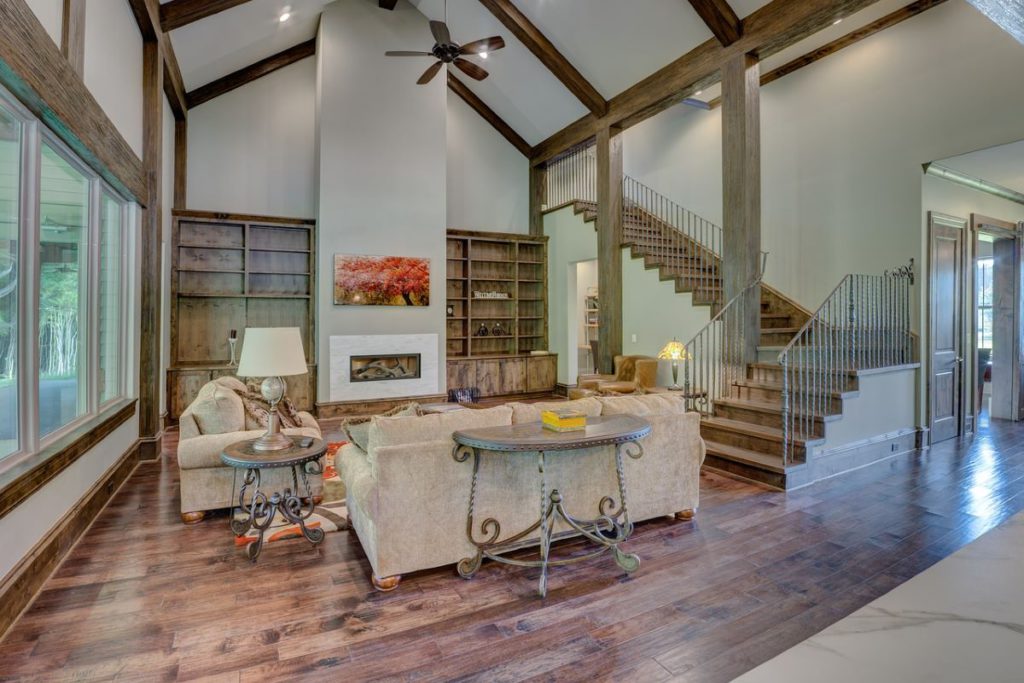The relationship between design and human behaviour is a fascinating field of study that has far-reaching implications in various aspects of our lives. Whether it’s the layout of your office, the colour of your bedroom walls, or the arrangement of furniture in your living room, the design choices you make can significantly influence your emotions and work efficiency. Here, we will delve into the intricate connection between design and the human psyche, shedding light on how a well-thought-out design can enhance mood and boost productivity.
The Influence of Colours
Colours are among the most potent tools in the designer’s arsenal when it comes to affecting mood and productivity. Different colours have distinct psychological effects on individuals, and understanding these effects can lead to more intentional design choices.
Blue: Blue is often used to add a sense of calm and peace to the space. It can reduce stress and anxiety, making it an excellent choice for office spaces. Research has shown that employees working in blue-themed offices tend to be more productive and focused.
Yellow: Yellow is associated with energy and optimism. It has a feel of warmth and happiness to it. In environments where creativity and innovation are encouraged, such as art studios or creative workspaces, a touch of yellow can be invigorating.
Green: Green is a colour often linked to nature and tranquillity. It can improve concentration and efficiency. Incorporating green elements into workspaces or study areas can have a calming and refreshing effect.
Red: Red is a bold and stimulating colour. It can increase heart rate and energy levels, making it suitable for spaces where physical activity or excitement is desired. However, excessive use of red can lead to agitation and should be used sparingly.
Neutral Tones: Neutral colours like beige, grey, and white can create a sense of balance and sophistication. They are versatile and can serve as a backdrop for other accent colours. Neutral tones are often used in minimalist and modern designs.
The Importance of Lighting

Lighting is another critical element of design that has a profound impact on mood and productivity. Natural light, in particular, has been shown to have numerous benefits for both mental and physical well-being. Exposure to natural light during the day can help regulate the body’s circadian rhythms, leading to better sleep quality and overall mood.
Incorporating large windows and skylights in interior spaces allows for ample natural light, reducing the need for artificial lighting. In office settings, providing employees with access to natural light has been linked to increased productivity, reduced eyestrain, and improved mood.
However, it’s essential to balance natural light with artificial lighting to ensure consistent illumination throughout the day. Adjustable lighting systems that mimic natural light patterns can be particularly effective in maintaining a comfortable and productive environment.
Ergonomics and Furniture Design
The design of furniture and the ergonomic considerations taken into account play a crucial role in both comfort and productivity. Poorly designed furniture can lead to discomfort, which can, in turn, affect one’s mood and work efficiency.
Office Chairs: A well-designed office chair that provides proper lumbar support can significantly reduce discomfort and enhance focus during work hours. Ergonomically designed chairs promote good posture and prevent musculoskeletal issues.
Desk Layout: The layout of a workspace, including the placement of the desk and computer monitor, can impact productivity. An organised and clutter-free desk can help reduce distractions and create a more focused work environment.
Flexible Seating: In some settings, offering a variety of seating options, such as standing desks or comfortable lounge chairs, can promote creativity and adaptability. Employees and individuals benefit from having choices that cater to different work preferences.
Biophilic Design
The biophilic design approach focuses on incorporating nature’s elements into the built environment. This design philosophy recognises the innate human connection to nature and seeks to enhance well-being by bringing natural elements indoors.
For instance, a mesh ceiling grid can be used to mimic the dappled sunlight filtering through leaves, creating a soothing and organic atmosphere. The incorporation of a mesh ceiling can also evoke the sensation of being under a canopy of trees, providing a sense of tranquillity and harmony with nature.
The Impact of Room Layout
The layout of a room can also influence mood and productivity. Open-concept layouts, for example, can promote collaboration and communication but may also lead to increased noise levels and distractions. In contrast, private or semi-private spaces can be more conducive to focused work.
Balancing these considerations is crucial. Some individuals thrive in open, collaborative environments, while others require quiet and solitude to concentrate effectively. Designing spaces with a variety of work zones can accommodate different preferences and tasks.
By understanding the psychological effects of design elements such as colours, lighting, ergonomics, and layout, we can create environments that support and inspire us in our daily lives. Whether it’s a welcoming home, a functional office, or a public space, the impact of design on mood and productivity is a dynamic and ever-evolving field that continues to shape our lives for the better.

